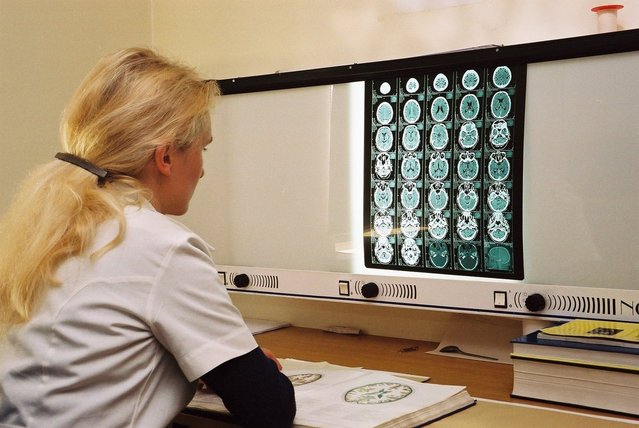Kidney cancer diagnoses are increasing but there has been no increase in mortality or rate of metastases. Kidney cancer is most often diagnosed as an incidental finding on a CT scan that was done for unrelated reasons. Treatment may not always be needed.

In the February 1, 2019 issue of American Family Physician, there is an editorial by H. Gilbert Welch titled “Stumbling onto Cancer: Avoiding Overdiagnosis of Renal Cell Carcinoma.” He points out that the incidence of kidney cancer has more than doubled since 1975, but “This is not an epidemic of disease, this is an epidemic of diagnosis.” It is a side effect of increased use of imaging. The majority of kidney cancers today are detected as incidental findings on a CT scanordered for a totally unrelated reason. Areas where more CT scans are done have a higher incidence of nephrectomies.
Diagnoses of kidney cancer are indeed on the rise. It is one of the top ten cancers in the US. According to the American Cancer Society, in 2019 we can expect 73,820 new cases of kidney cancer (44,120 in men and 29,700 in women) and 14,770 deaths from the disease (9,820 in men and 4,950 in women). The lifetime risk of developing kidney cancer is 1 in 48 men and 1 in 93 women. It can present with bloody urine, flank pain and an abdominal mass, and 20% of patients present with paraneoplastic disease (hypertension, hypercalcemia, and polycythemia). But more than 50% of patients are asymptomatic at the time of diagnosis. And 30% of patients already have metastases when they are diagnosed. Treatment is usually surgical, but some patients can be followed with active surveillance.
CT can detect 90% of renal masses and can help identify benign masses that do not require further investigation and lesions that can be monitored with active surveillance. The 5-year survival ratesare 93% for localized cancers and 12% if there are distant metastases, so early detection would be expected to save lives. Unfortunately, no screening test has been shown to reduce the risk of death, and screening tests for renal cell carcinoma are not recommended except in the case of certain inherited syndromes.
This graph from the editorial shows that while the incidence of kidney cancer has doubled, there has been no change in mortality or in the incidence of metastases. The 5-year survival rate is increasing, but this is an artifact of lead time bias and overdiagnosis bias.

Welch has long been a vocal critic of injudicious screening tests. He has written several books including Overdiagnosed: Making People Sick in the Pursuit of Health, which I reviewed in 2011. He says,
Imaging – and testing in general – has real downsides, such as stumbling onto things you wish you had not.
He illustrates with a typical case from his own practice. Mr. Baker’s presenting complaint was hoarseness for six weeks. An ENT specialist found a small tumor on the vocal cord and removed it, effecting a complete cure. Somewhere along the way a chest x-ray was done that was interpreted as abnormal. Further evaluation with a chest CT scan showed no abnormality in the chest but showed a 5-cm mass in the kidney compatible with renal carcinoma. The urologist recommended the kidney be surgically removed, but Dr. Welch and Mr. Baker made a shared decision to forgo surgery and follow with repeat CT scans. Sometimes the lesion enlarged a bit, sometimes it shrank. Ten years later he died of pneumonia with both kidneys intact. Autopsy showed he did indeed have a renal carcinoma, but it had remained asymptomatic for ten years and had never spread beyond the kidney.
His editorial ends with the admonition to test wisely, weigh the risks and benefits of testing, and remember that sometimes the right thing to do is nothing.
Thyroid cancer
There is another screening test that caused an epidemic, not of disease but of overdiagnosis. Screening for thyroid cancer is not recommended in the US, but it has been aggressively pursued in South Korea, where by 2011 the incidence of thyroid cancer diagnoses had risen to 15 times the level in 1993. David Gorski has written about overdiagnosis in Japan following the Fukushima disaster and about the willful misunderstanding of overdiagnosis.
Incidentalomas
An incidentaloma is an unexpected abnormality accidentally found on medical imaging studies done for an unrelated reason. Estimates vary, but incidental findings probably occur in at least half of imaging studies. In a TedX talk, radiologist Jill Wruble said she never saw a “normal” patient; she identifies 2-3 abnormalities on every scan. Researchers are trying to develop guidelines to help clinicians decide whether a given incidental finding requires further evaluation. Meanwhile, patients and doctors worry. Pursuing a diagnosis is likely to require invasive and expensive tests, including biopsies and surgery with all their possible harms and complications, up to and including death. In my SkepDoc column in Skepticmagazine I described how an incidentaloma on a routine (and not medically indicated) chest x-ray started a sequence of events that killed my father-in-law. Scans have detected incidentalomas in my own liver and kidney that my doctors agreed did not warrant any further investigation. I am not worried, but I can imagine how medically naïve patients might worry obsessively about what was lurking in their body, particularly if they distrust the medical profession.
Conclusion: Screening tests and imaging should be used judiciously
Screening tests can save lives, but not as many as most people think. They can also lead to unnecessary treatments or initiate a diagnostic wild goose chase that can harm or even kill patients. Imaging studies are important components of the diagnostic process but they routinely detect incidentalomas, most of which we would be better off not knowing about.
To repeat what I said in my SkepDoc column, “Technology is getting away from us like the broom in The Sorcerer’s Apprentice. We need to tame that broom.”
This article was originally published in the Science-Based Medicine Blog.
